Is Tim Anderson's Hot Start Sustainable? His New Approach Against Sliders Provides Some Answers

Tim Anderson has one of those classic April stat lines that makes early season baseball such a joy. Through play Friday, the White Sox shortstop is hitting .422/.439/.656 with four homers, three doubles, 12 RBI and one walk (ONE!) in 66 plate appearances. Much of this is nothing new. The pop? Anderson hit 20 homers in 606 plate appearances last year, and 17 in 606 trips to the plate in 2017. The dearth of walks? Also par for the course. Anderson’s career high in walk rate is 5%, and he came into this season with a career mark of 3.4%.
That’s not to say Anderson isn’t a different hitter this year, or that his April line is pure April, bound to even out once baseball does its thing. Anderson has made a substantive change designed to close one major hole in his offensive game, and the early returns suggest that he can maximize production as a swing-happy player who doesn’t walk very much.
In 2018, 141 players saw at least 500 sliders. Anderson’s .226 wOBA against the pitch ranked 114th among those 141 players. All told, he hit .172 with a .269 slugging percentage and eight extra-base hits. He had a 41.1% whiff per swing rate against the pitch, and 48 of his 149 strikeouts ended with the slider as strike three. Anderson was, in a word, terrible against sliders last year.
That’s not the case this season. Anderson has seen 47 sliders this season. He’s hitting .438 with a .625 slugging percentage against the pitch. He already has one homer on the offering, half as many as he did last all of last year, and his whiff per swing rate against it is down to 24.4%. All of Anderson's numbers against sliders was courtesy of Brooks Baseball. It may be early, but this isn’t just suggestive of a changed hitter. It’s screaming that Anderson has changed. Thankfully, we have the pictures to prove the numbers-based hypothesis.
Anderson was all over the place in his setup at the plate last season. Let’s take a look at four different GIFs, each one from a plate appearance about six weeks after the one that preceded it. We controlled a few key variables before creating each GIF. First, each one is from a 1-1 count. Not only is this an even count with neither Anderson or pitcher ahead, but it guarantees that we’re not getting him in a spot where he’s trying to ambush the pitcher on the first pitch, or taking a two-strike approach. They’re also all against righties to control for the handedness variable. Finally, each is taken from a game at Guaranteed Rate Field, so we know we’re getting the same exact camera angle on all of them.
Are we sure that’s the same hitter? In the first one, there’s very little movement in Anderson’s stance, his feet are even, and he strides toward the plate. The second one is similar, though he starts off in a slightly closed stance. By time July rolled around, the third GIF, Anderson had opened his stance and introduced more of a bat waggle. He still stepped toward the plate, but that squared his feet rather than closing his stance. In late August, he was more upright, his stance was open, and the stride toward the plate was far subtler.
We’re not here to say any one of those is better than the other. What we are here to say, though, is that it isn’t good to make that many changes, no matter how minor, over the course of a season. In a way, Anderson was always starting from scratch because he wasn’t giving himself time to get in any sort of foundational rhythm at the plate.
Now, consider what we’ve seen from Anderson this season. We’ll do the same exercise, looking at one plate appearance from the White’ Sox first homestand of the year, and another from their most recent stay at home.
Now that looks like the same hitter. Anderson’s stance this season is slightly open, similar to what we saw in the second half of last year. The stride is all different, however, with his foot remaining in the air longer and not landing until he begins his swing. That gives him more time to read pitch type and location before firing his hips. His back elbow is tighter to his body, and his hands are elevated from where they were last year. Compare his hand and elbow placement in the following two screenshots. The first is from this season, and the second is from 2018.
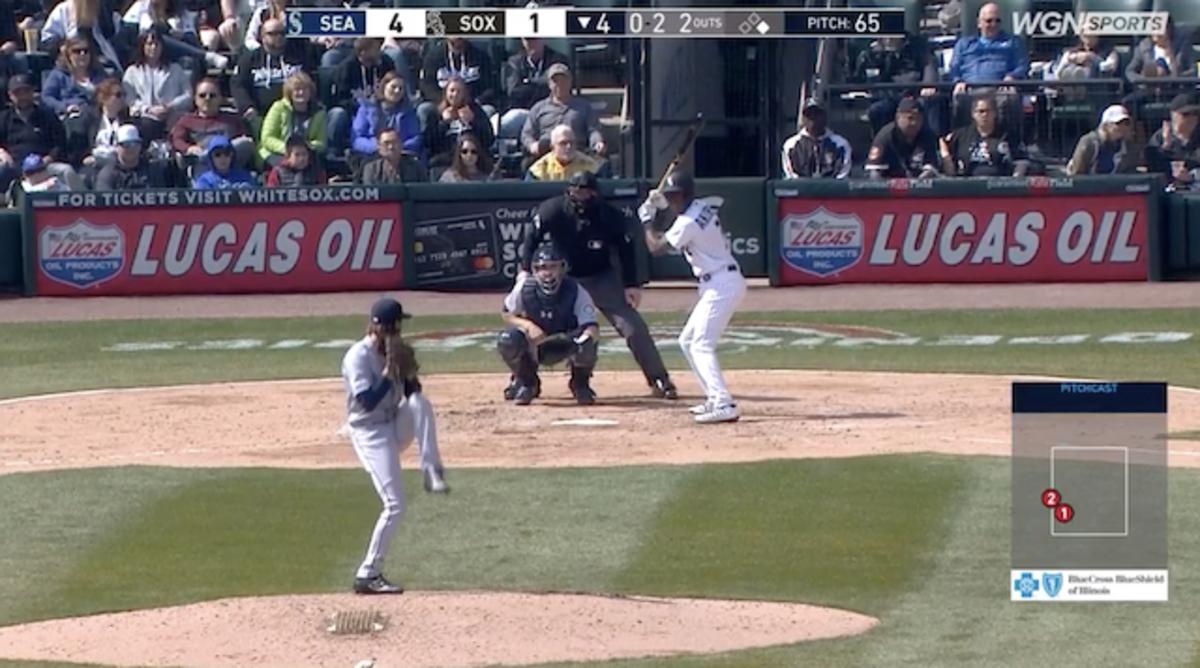
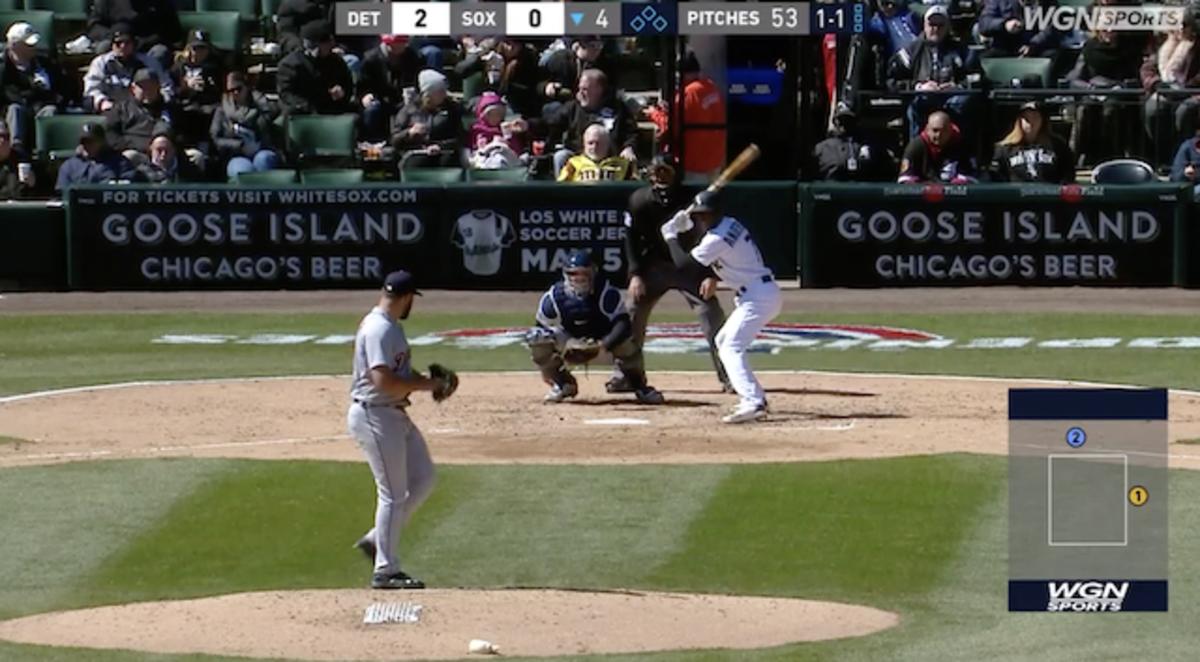
Finding a comfortable setup he can repeat was just step one for Anderson. He also needed one that would make him less vulnerable against sliders, specifically sliders on the outer third and off the plate away. It’s safe to say he found it.
We don’t yet have enough data this season to compare Anderson’s swing and whiff rates in specific zones to what he did last year. We can, however, still appreciate just how bad he was against sliders away last season, thanks to our friends at Brooks Baseball. The following charts show Anderson’s whiff rate and slugging percentages against sliders from last year.
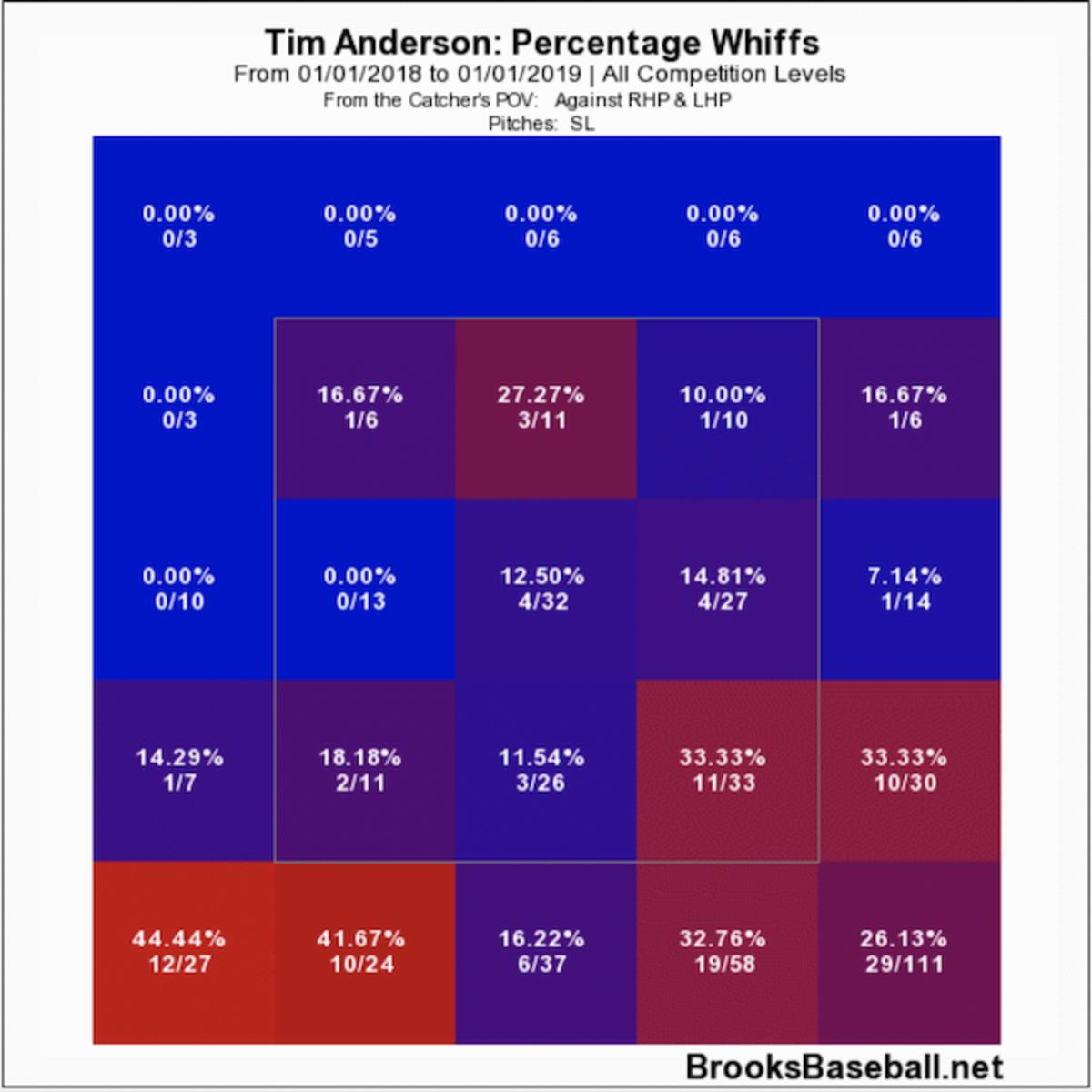
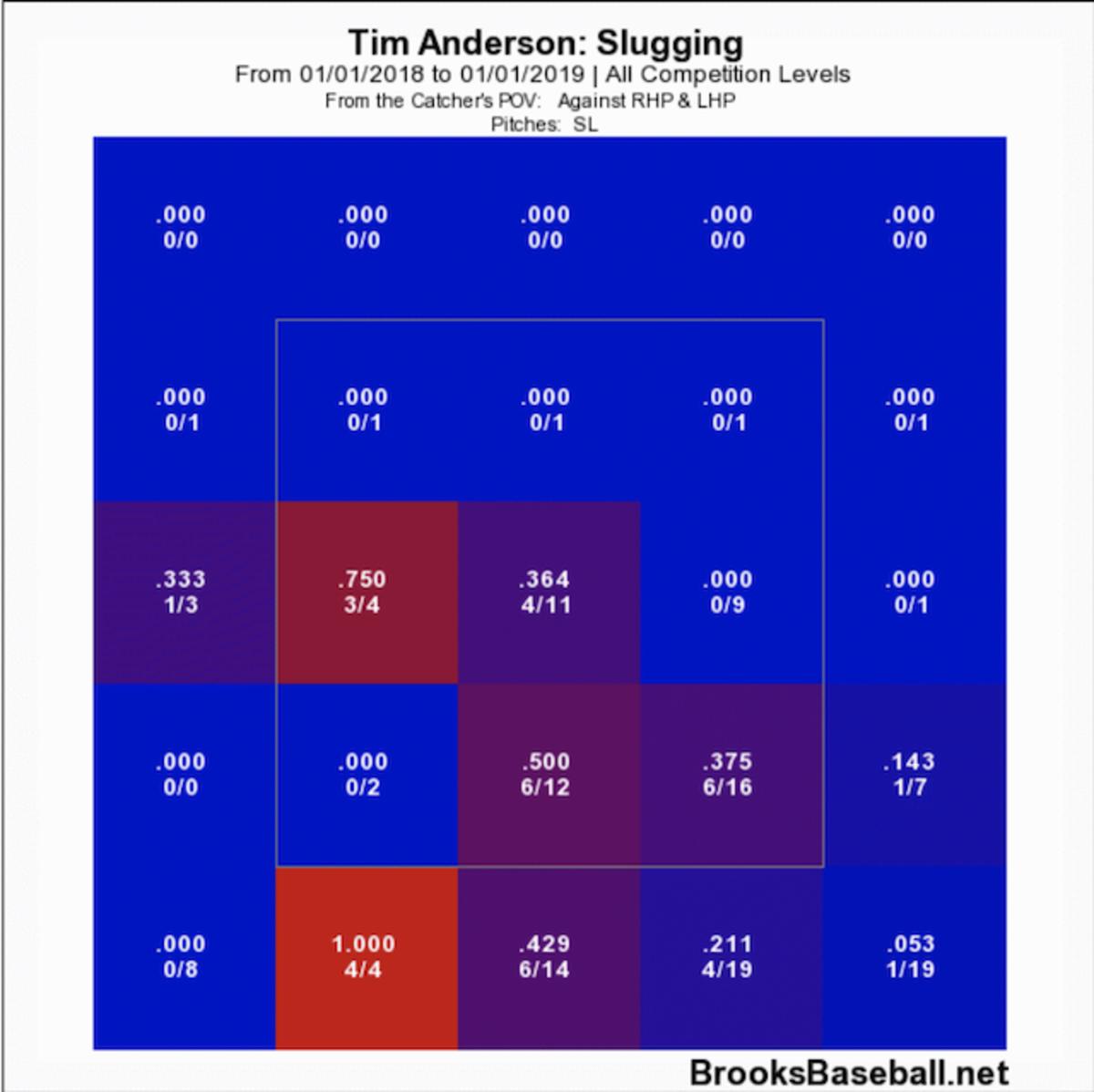
Pitchers had no reason to fear Anderson on sliders away. They could get him to swing and miss with regularity, and chase off the plate. If he happened to make contact, he rarely made them pay. The following GIF helps explain why. Watch as Anderson whiffs at this 2-2 slider from Cleveland’s Shane Bieber.
Now take a look at this screenshot, paying particular attention to his hands, hips and feet, as he starts to swing.
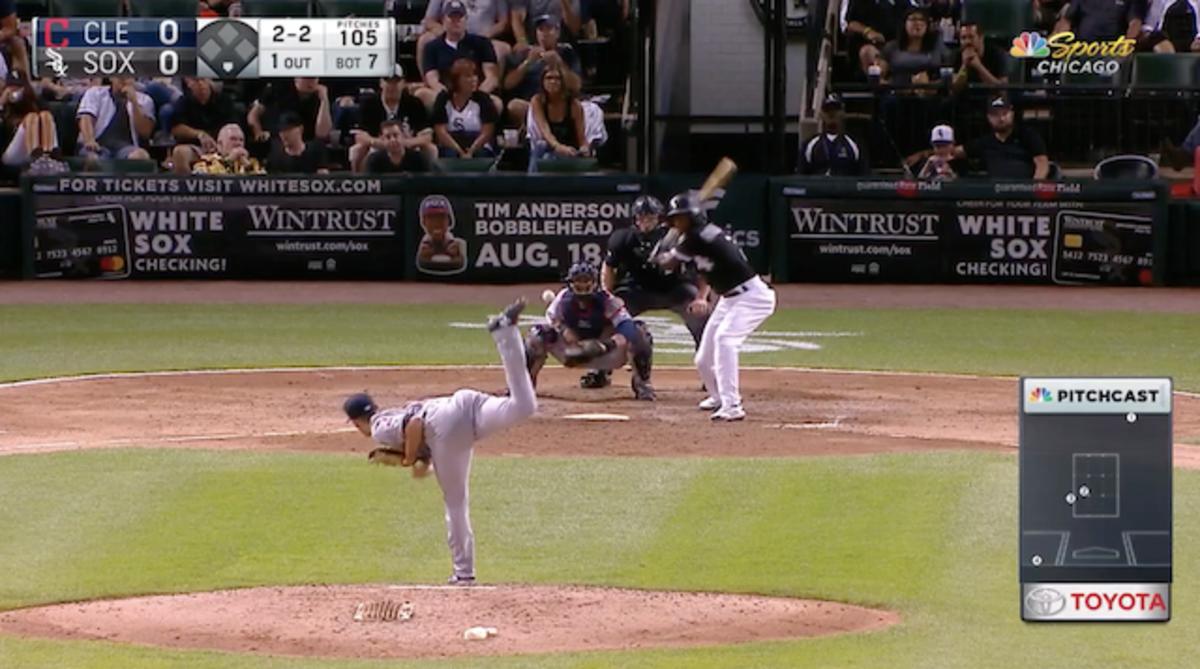
Anderson has completely pulled off this slider, and has no hope of making contact. If you pair this with the GIF, you can see that he opened his hips earlier than he’d like, which left him completely defenseless against anything away, especially a breaking ball. All Bieber had to do was get his anywhere near the zone, and Anderson was defeated.
Compare that with the following screenshot. This is from one of the 2019 plate appearances we looked at earlier, and resulted in a single against a slider from Mike Leake.
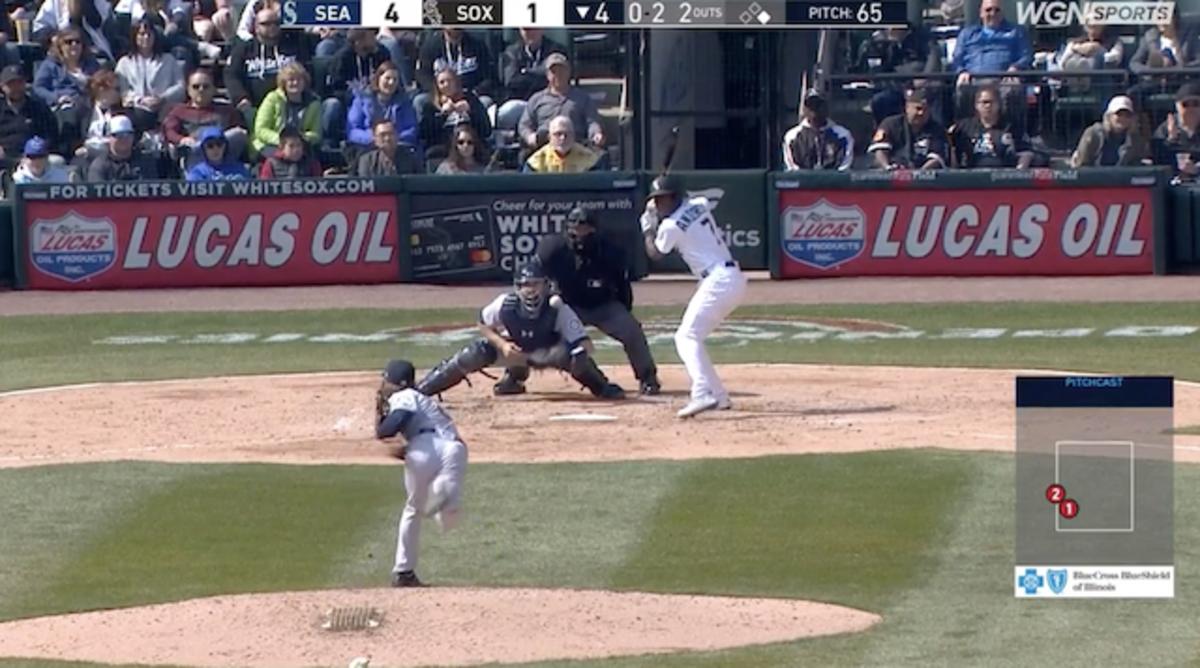
Look how much more square Anderson is to the plate as Leake’s slider is reaching the hitting zone. This speaks to the change he made with his stride that we discussed earlier. By keeping his foot in the air longer, he keeps his front him closed until he’s ready to begin his swing. That allows him to stay on pitches away, notably breaking balls. Take this one a frame farther, and you can see Anderson’s hands still behind the ball as he begins his swing. That lets him go down and serve this one into left-center for a base hit.
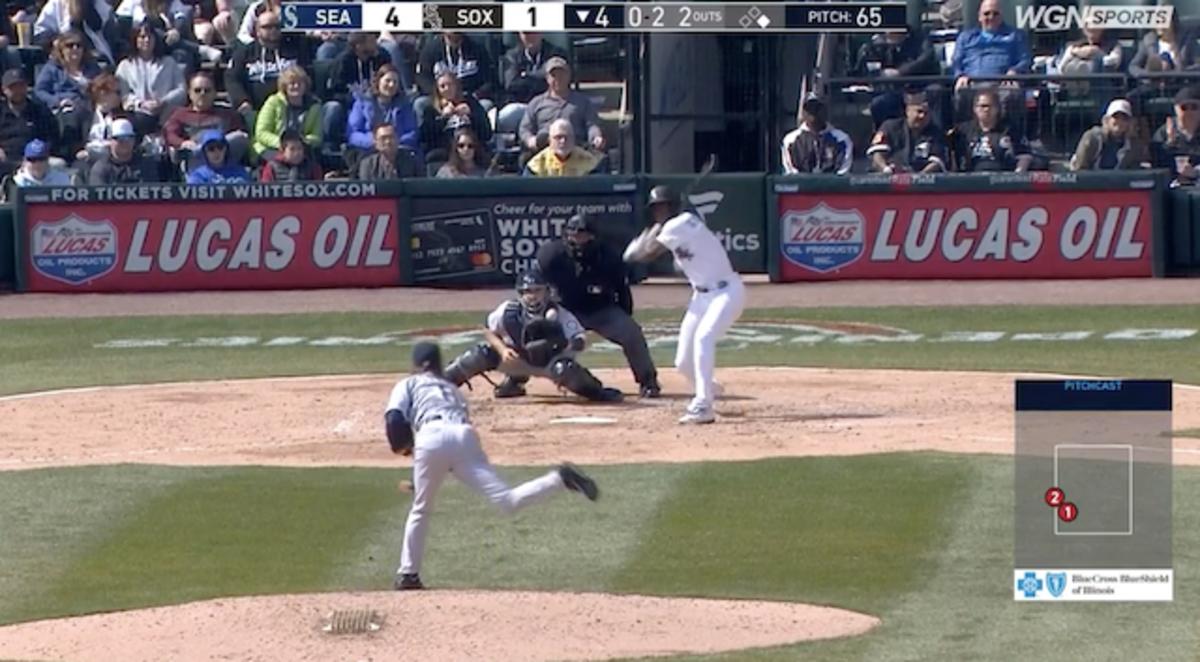
This is just the kind of substantive change we want to see a hitter make before we buy into a full-fledged breakout. Anderson’s lack of walks is always going to put a lot of pressure on his batted-ball performance, but he’s showing this April that he can succeed that way.
